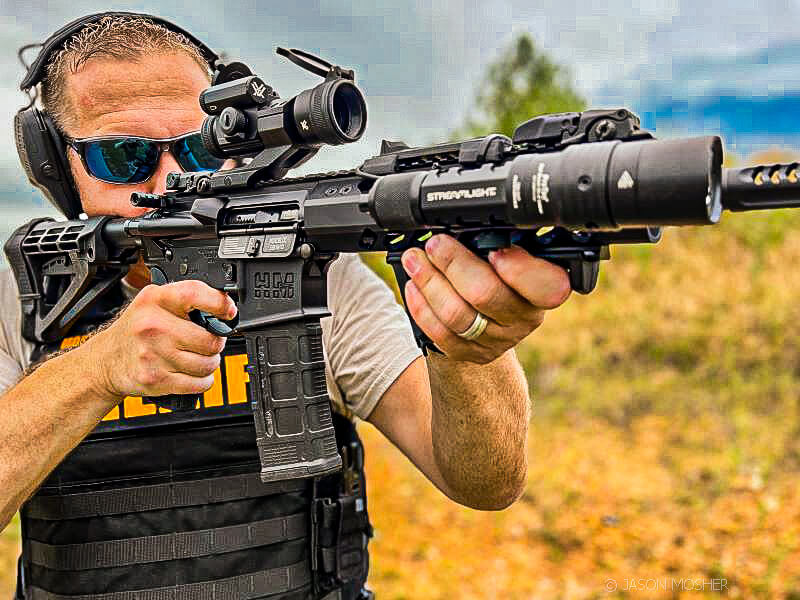
The Modern-Day Patrol Rifle
Have you ever wondered just what caused police across the country to start carrying a patrol rifle? Before rifles were standard issue, most police carried shotguns. Shotguns are a mean, lean, fighting machines, right? Well, yes, and no. Shotguns are great in some situations, but when working around the perimeters and conditions that police do, there really isn’t one tool for everything. Shotguns have their limitations, like anything else.
And like anything else, we learn from the past, adapt, and prepare for the future. A “standard” issue patrol rifle is really a modern concept.
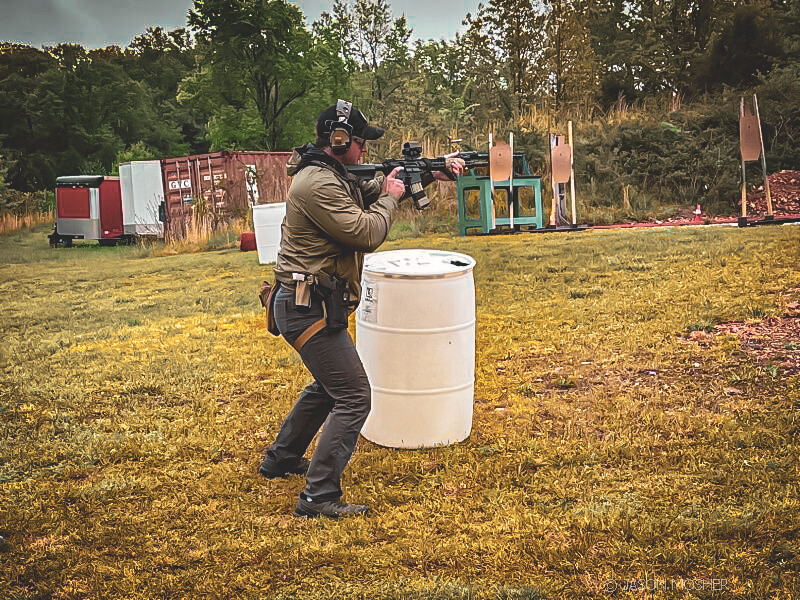
As we will discuss below, police didn’t carry rifles as a norm until the late 1990s and into the early 2000s.
Over the years police upgraded from revolvers to semi-auto handguns, started wearing body armor, and other modern gear. It only makes sense that police started carrying a rifle to help deal with the modern-day bad guy too.
Here’s a quick look at the transition from the shotgun to the AR-15 patrol rifle.
Before the patrol rifle was the ever-intimidating shotgun
For much of the 20th century, the standard long gun found in American police vehicles wasn’t a rifle. It was a different type of long gun. It was the shotgun, a gun capable of saying “get off my porch” just by racking one in the chamber.
The shotgun was simply the king of the long-gun world for years. Police often carried the Remington 870, Mossberg 500, Ithaca 37, or perhaps the older Winchester Model 1897. If one was not found in a patrol car, it was probably locked away in a secure room of the precinct.
Within the close confines of typical urban environments or building searches, a shotgun offers immense stopping power. It is relatively simple to use, reliable, and intimidating. Another advantage is that different loads offer flexibility, from buckshot to slugs, less lethal and more.
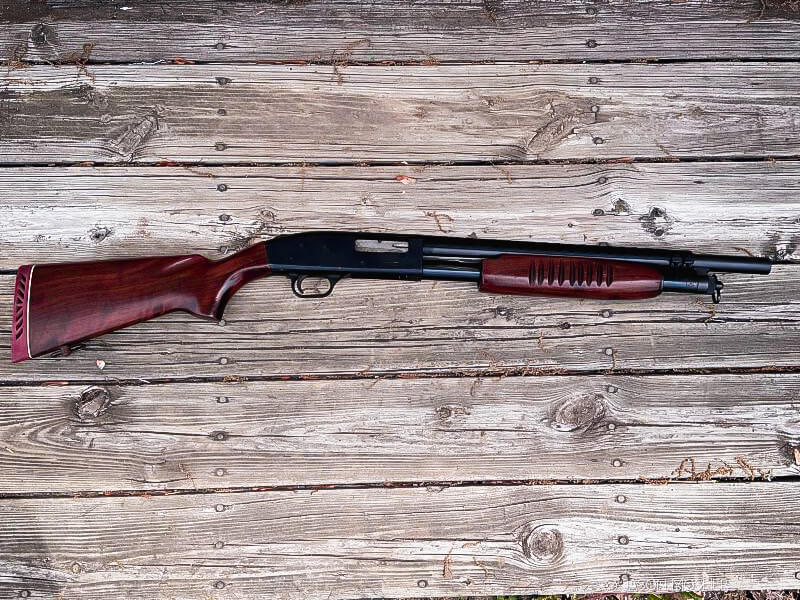
However, the shotgun has limitations. Its effective range is quite short, typically well under 100 yards, even with slugs. Accuracy beyond 50 yards can be challenging. Magazine capacity is often limited, and reloading under stress can be slower than a magazine-fed rifle.
While rifles were occasionally used, they were far from the standard issue. Departments that employed rifles often used a variety of models, including the Winchester Model 94, Remington Model 8, and even the M1918 Browning Automatic
Even though a shotgun is perfect for many scenarios, certain situations began to expose these limitations, paving the way for a new tool.
Early Rifles and Whispers of Change
It wasn’t that rifles were never used by police before the modern era. In rural areas, deputies might have carried their personal rifles. After World War II and Korea, a significant number of surplus M1 Carbines became available, and it wasn’t uncommon for an officer to keep one in the trunk when policy allowed.
The M1 Carbine was handy, easy to shoot, and held 15 or 30 rounds. It offered police a capability they previously lacked: engaging threats accurately beyond shotgun range.

These rifles represented an early form of the “patrol rifle” concept. But again, this was not widespread, and most police across the country carried only their sidearm and shotgun. While some agencies may have even issued rifles, there was no standard patrol rifle used by police across the nation.
Budgets within an agency are almost always tight, and there wasn’t a clear need to add another weapon. That is, until there was…
The Catalyst: Events Forcing Re-Evaluation
The landscape of police armament changed dramatically on February 28, 1997, during the infamous North Hollywood shootout.
When police responded to the scene, they were met with gunfire from two heavily armed bank robbers wearing body armor. The officers, primarily armed with pistols and 12-gauge shotguns, found their weapons largely ineffective.
This event revealed to the world that American police were not equipped to engage this type of threat. Officers needed a tool that could reliably defeat body armor at distance and provide accurate, sustained fire.
It has somewhat the same effect on rifles as the 1986 Miami-Dade shootout did on handguns. The bad guys shouldn’t have more firepower than the good guys.
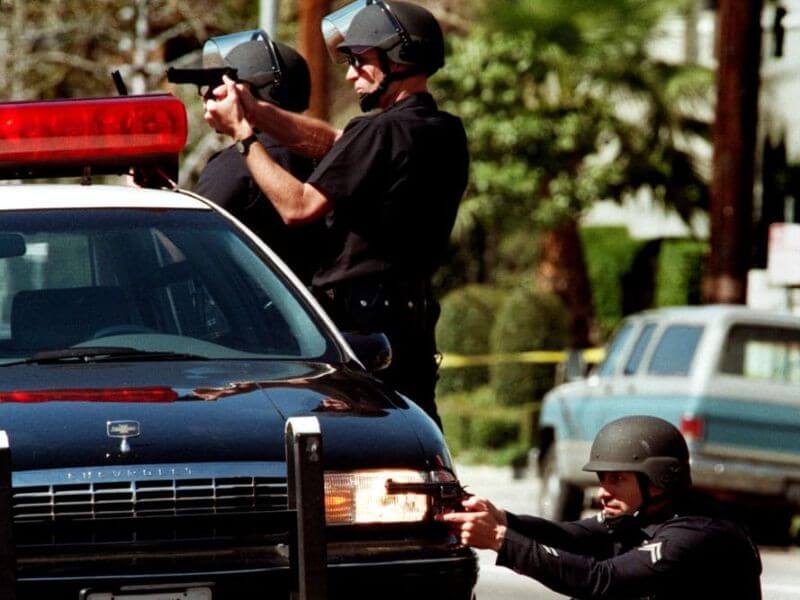
While some specialized units like SWAT had appropriate rifles, the average patrol officer did not. The North Hollywood incident was broadcast live on television and sent shockwaves through the law enforcement community.
Agencies across the country realized their standard equipment might not be sufficient for evolving threats. This, combined with other incidents, created an undeniable need for change.
The Rise of the AR-15
As agencies realized the need to issue patrol rifles to officers, the Ruger Mini-14 and M1 Carbine were among some of the first rifles to be issued. This was mostly because they were so available on the open market. There was also a slew of M16’s in the military’s arsenal, a build up from the Vietnam war. Getting ahold of these, however, was not so easy at the time.
There were, however, companies producing the civilian version, AR-15, and it wasn’t long before agencies started flocking to these rifles.
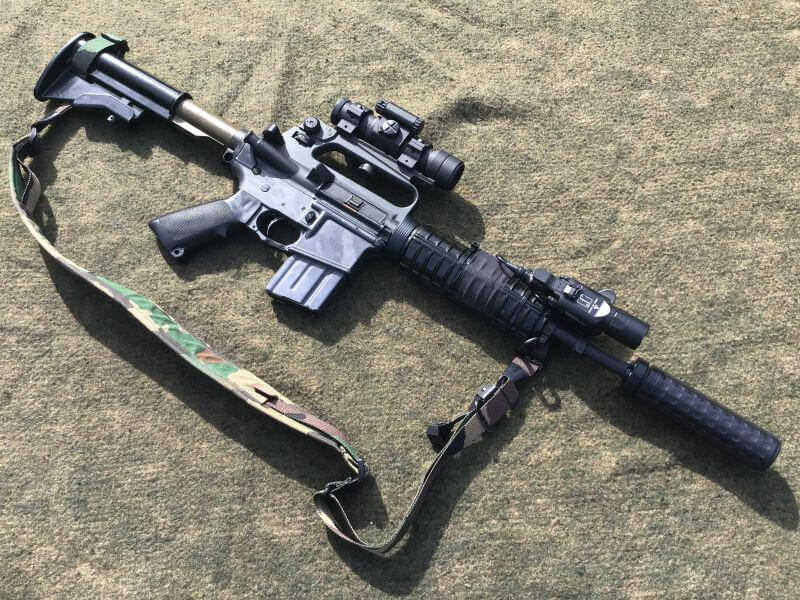
Originally designed by Eugene Stoner in the late 1950s, the AR-15 and its military counterpart, the M16, were becoming increasingly common. Several factors made it an ideal choice for law enforcement. It was lightweight, ergonomic, and relatively easy to control.
Its modular design allowed for easy customization with optics, lights, and different stocks or grips to fit various officers and needs.
Another benefit was that many officers were veterans and already familiar with the M16/M4 weapon system. This reduced training time and costs.
Evolution of the modern-day patrol rifle
In the early 2000s, the first AR-15 to become popular nationwide was the Colt M4. Other brands were used, but Colt became a dominant brand used by police for years.
During training events and government sales, I’ve seen a lot of these rifles still being used by agencies. The early models with the carry handle and
As we know, the AR-15 platform has not changed much since it’s creation. Much like Browning’s 1911 pistol, it has undergone some modern upgrades, but the bones remain the same.
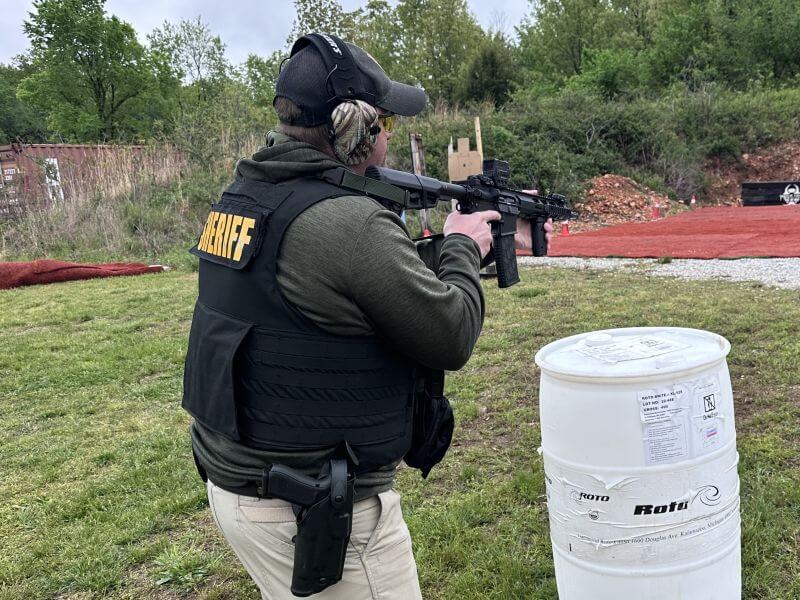
Over time, the handguards have changed, and now we have Picatinny rails for mounting all kinds of stuff. You won’t see the carry handle much anymore, either, even though I think they’re pretty cool.
Today, there isn’t really one dominant brand of rifles being used by police. With so many companies making the AR-15 rifle, agencies have a ton of options. What you can attach to a patrol rifle has also changed enormously since the first Colt M4s were being used.
Patrol rifles today are often equipped with optics, light, fore-grip, laser, magnifier, etc. It’s so easy to customize a rifle that each officer can configure it to meet their needs.
The new standard
Today, the patrol rifle, most often an AR-15 variant, is a standard piece of equipment in police vehicles.
Many agencies still issue a shotgun as well, but there is no question the AR-15 is the dominant choice for most agencies around the country.
Part of this is the continued development and availability of the AR-15 platform. An agency can pick from any number of manufacturers and customize the trigger weight, barrel length, type of stock, grips, etc.

Back in the day, most people would have thought it overkill to issue every patrolman an AR-15 rifle. It’s strange how expectations and acceptances change over time. This is mostly fueled by events in our society and what we deem “normal.”
But either way, the modern-day AR-15 has become the American patrol rifle and doesn’t appear to be going anywhere soon.